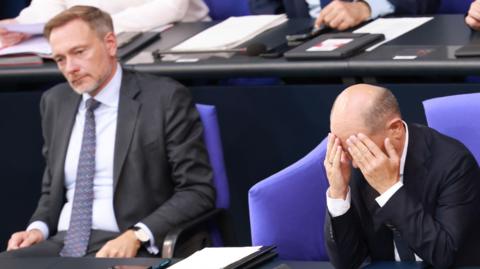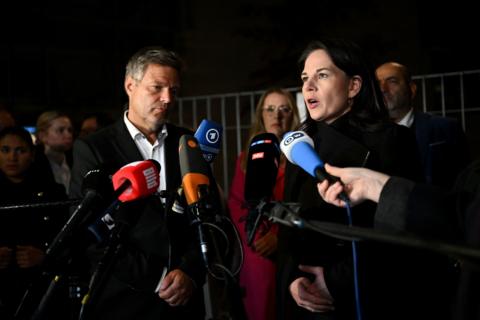The so-called traffic-light coalition was formed after Scholz's Social Democrats narrowly defeated the conservatives in federal elections in September 2021.
It was named after the individual red, yellow and green colours of three parties - Scholz's centre-left, the economically liberal FDP and environmentalist Greens - who all planned to spend big on their own individual core interest groups.
However, Russia's full-scale invasion of Ukraine in 2022 sent energy prices surging, and left Germany facing a increase in defence spending - and the cost of taking in 1.5 million Ukrainian refugees.
Scholz and his Green partners want to tackle this by loosening the debt brake to allow more spending. Lindner wanted to pay for tax cuts by slashing welfare and social budgets and pushing back environmental targets.
Economy Minister Robert Habeck of the Greens said the party would not quit the government and that its ministers would remain in office.
Scholz announced that a vote of confidence would be held in Germany's parliament, the Bundestag, on 15 January.
If MPs vote down the government, the country will head for fresh elections within weeks, instead of the scheduled date in September.
However, the opposition could force Scholz out earlier if they can find a majority for an alternative chancellor.
For now, Scholz will head a minority government comprised of his Social Democrats and the Greens - the second-largest party in the coalition.
Without a parliamentary majority, Scholz's coalition will need to cobble together support for individual votes from other parties in order to pass laws and measures.
Scholz said he would ask Friedrich Merz for support in passing budgetary measures to help Germany's ailing economy and boost military spending.
Scholz has named Jörg Kukies as Christian Lindner's replacement as finance minister.

